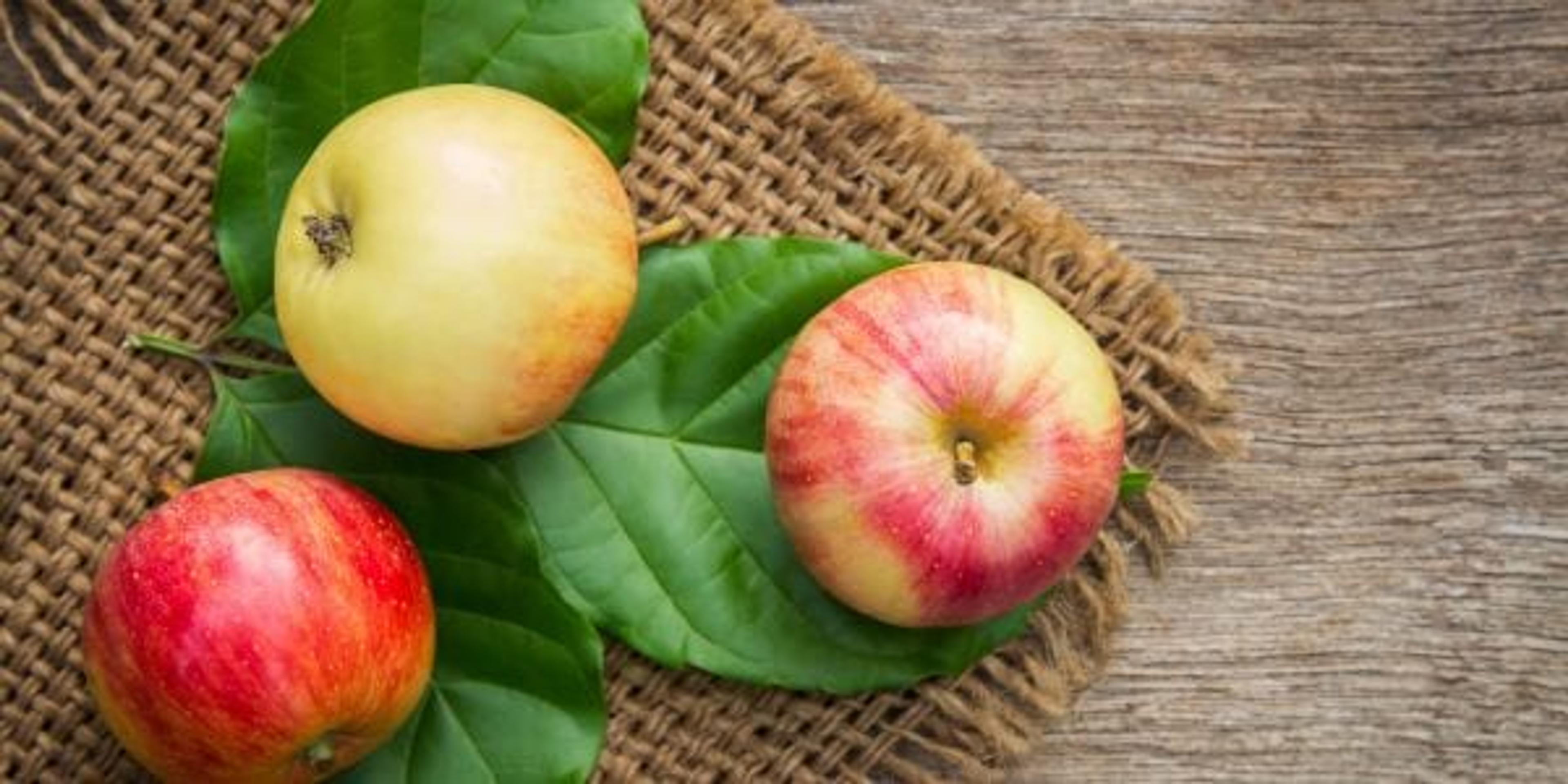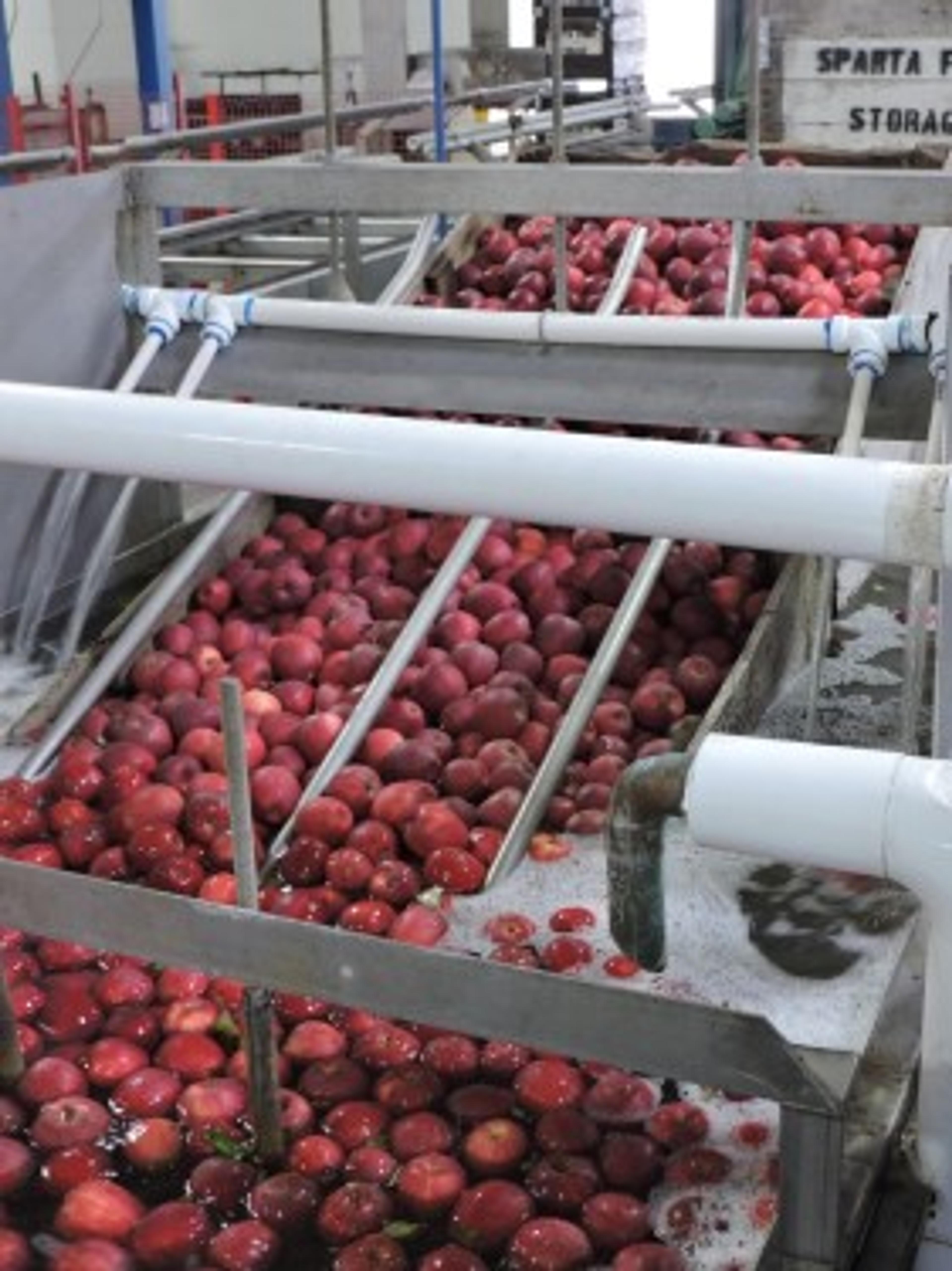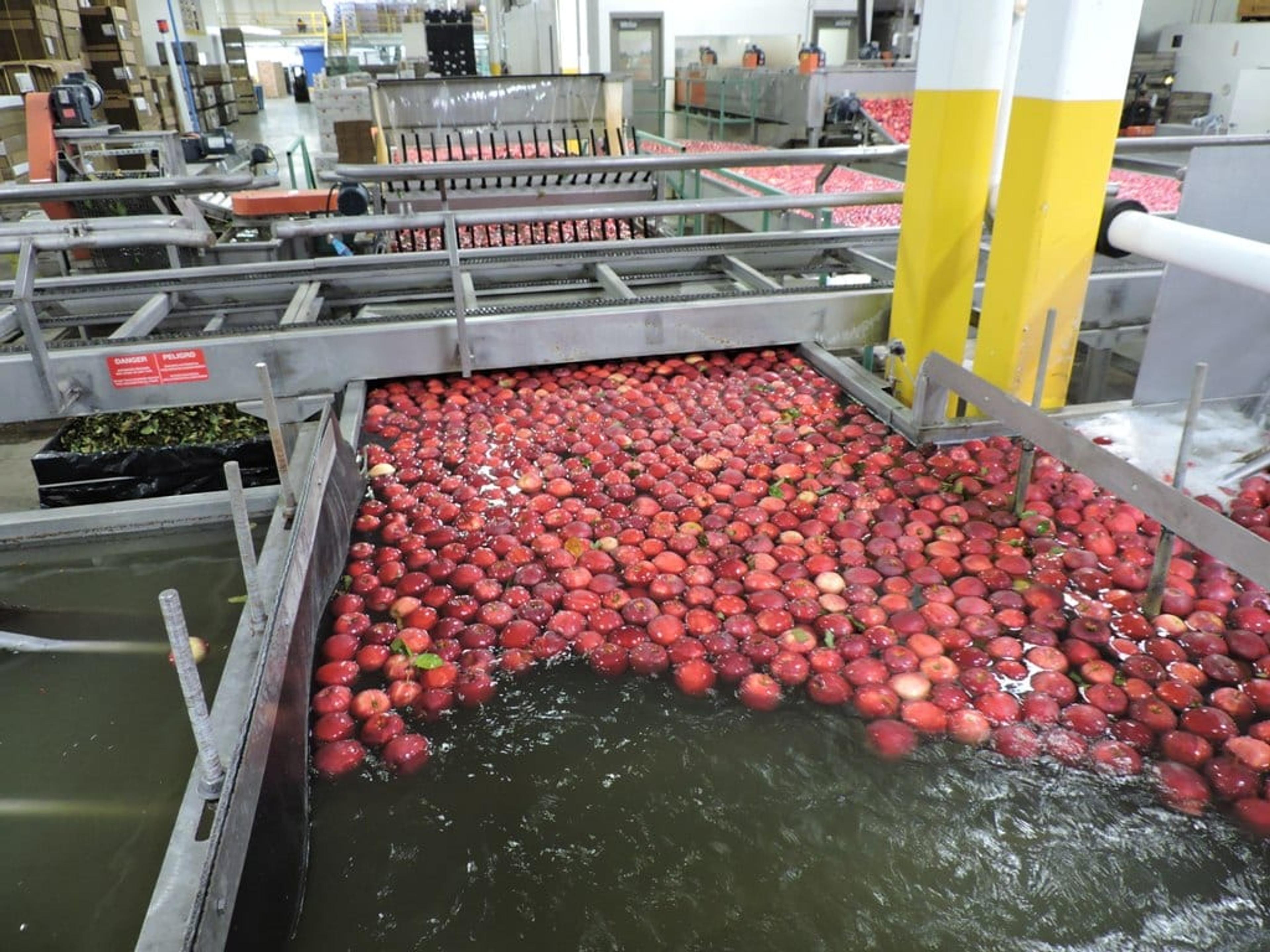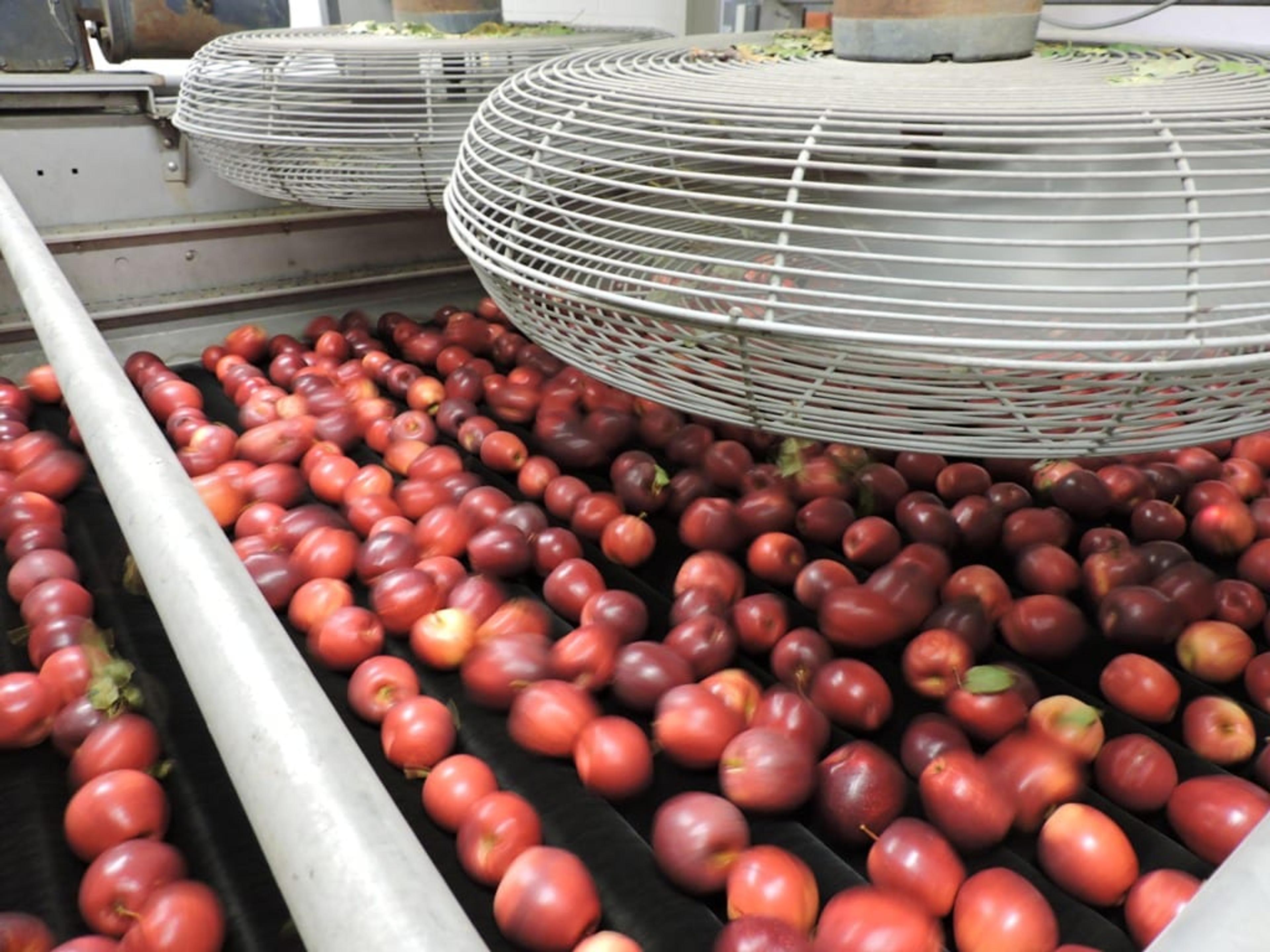Down the Line: How Apples Make it From the Farm to You

Julie Bitely
| 3 min read

They appear on the shelf at your grocery store or farmers market as if by magic, but the apples you’re about to buy have actually been on quite a journey.

On the third stop of a recent Michigan apple blogger tour, hosted by the Michigan Apple Committee, the storage and production of apples for public consumption was explained in detail at one of the country’s largest facilities.
Sparta-based Jack Brown Produce, Inc., processes fruit from about 75 growers in the state and sells apples under the Apple Ridge brand. The 208,000-square-foot packing facility has the capacity to handle over 400 bins of apples per shift.Eighteen percent of the apples they process go overseas to continental Europe, the Middle East, Central and South America, India, and Mexico.
So, what happens to apples after they’re harvested from participating growers’ orchards and before they show up on a shelf? A lot!

Apples floating down the line.
First, they’re carefully floated out of the bin they come in, to avoid bruising.
After that, they’re cleaned with a food-safe wash and rinsed again.
They then travel through a heated air drier and are brushed to bring out a natural shine.

Apples being dried.
Food-safe wax is applied to enhance their appearance. Another visual inspection follows, removing the apples that are not measuring up.
An electronic scanner then sorts the apples by size, color, and shape, then a fully automated sorter prepares the apples for packaging.
After they’re packed into trays or bags, they go into boxes, which are then either shipped directly to the marketplace, or placed in cold storage.
In the long-term cold storage facilities, the temperature is kept between 32 and 38

Apples packed in a cold storage room.
degrees, depending on the variety of apple being stored. Oxygen is displaced from the air-tight storage rooms, which essentially puts the apples to sleep, keeping the fruit in just-picked condition.
Michigan Apple Committee Executive Director, Diane Smith, explained that holding apples in cold storage facilities allows Michigan apples to be sold most of the year. This is important in retaining shelf space at retailers around the country and the world.
John Schaefer said the amount of care and detail that goes into the processing of the growers, who rely on Jack Brown Produce to get their apples to market, is important. Taking measures that reduce the chance of bruising the apples and enhancing their appearance through brushing and waxing, speaks to the desires of the consumer.
“Like it or not, we all buy with our eyes,” he said.
Farmer Mark Youngquist of Youngquist Farms said it’s critical to his business that a majority of apples picked make it to the shelves, which is where a trusted production facility comes in.
“You’ll go into the red in a hurry if you don’t get your fruit out there,” he said.

Michigan apples almost ready to be shipped to a store or sent to cold storage.
On his farm, about 85 percent of the apples harvested make it to market. The remaining apples will be sold to the processing and juice markets, which isn’t as lucrative. Those apples are still good, but they might not be free of bruises or blemishes. Youngquist trusts his apples to be handled with respect at Jack Brown Produce.
“Integrity in this business is everything,” Schaefer explained.
This is the third of four posts covering the apple tour. Read the intro post, farming post, and check back in for one more post about apple tourism.
Check out these awesome apple recipes!
Photo credit: Aphihat chuangchoem (feature) and Julie Bitely (interior)





